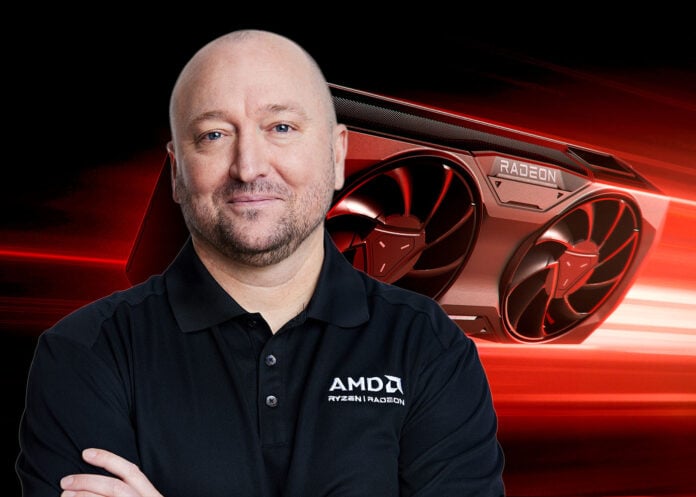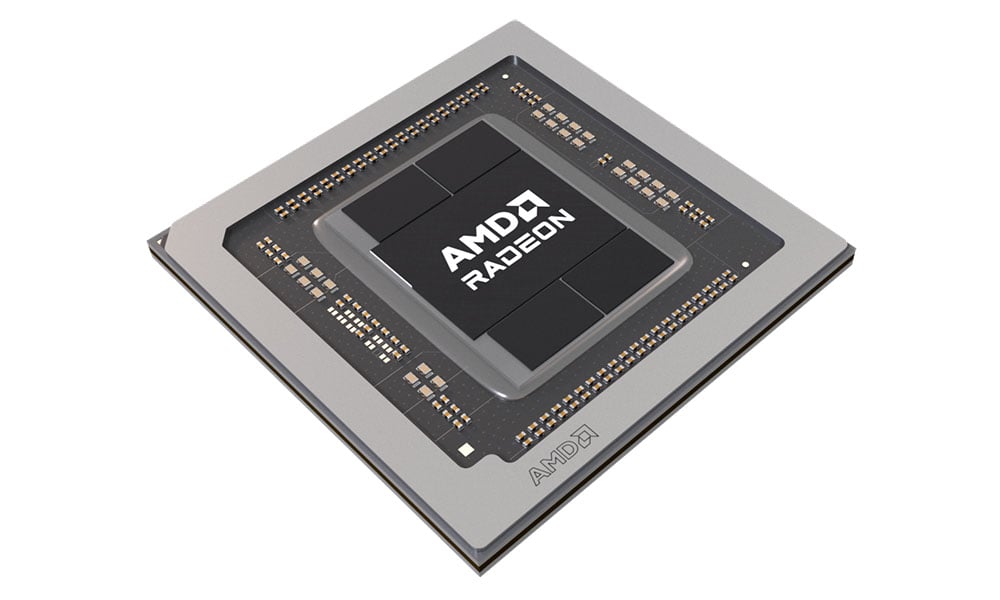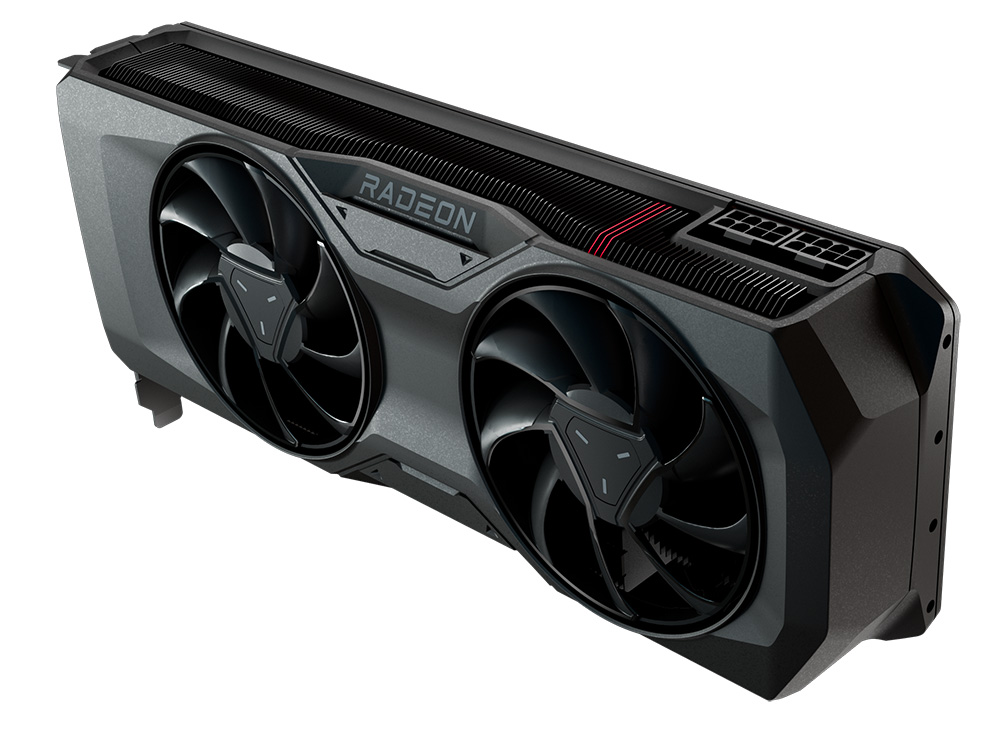
Following on from the Gamescom announcement of RX 7800 XT and 7700 XT, Club386 shot the breeze with AMD graphics boss, Scott Herkelman, on all matters Radeon. Always ready and primed for a great insight or two, the senior vice president of AMD’s graphics business was only too happy to answer an array of questions we’ve been meaning to ask on your behalf. Let’s get straight to it.
Club386: Radeon RX 6000 Series was launched with a top, middle, bottom strategy. Radeon RX 7000 Series has taken a good while to reach the critical middle segment, why change the strategy for this generation?
SH: When we originally planned the Radeon RX 7000 Series stack, it was just like this because of other company priorities. I would love to release the stack quarter after quarter, but the reason for doing it this way is to keep within the constraints of our own company. I’d have preferred to do Radeon RX 7000 Series top, middle and bottom.
These products were planned two to three years out, right around the time we launched RDNA 2, and we then set the schedule of taping out certain future products. If we could do it all over again, I’d love to have a different priority.
Club386: You mentioned at Gamescom that no further RDNA 3 ASICs will be released, though variational SKUs may be. Will we see RDNA 3 for the budget-conscious buyer, just like we saw in the last generation?
SH: That’s exactly right. For discrete GPUs, this is the last RDNA 3 ASIC you’ll see in the family. We believe that RX 7600 is positioned well. I think that’s a great product for the performance. We still do have a good portfolio down below on Navi 2, whether that’s RX 6500, RX 6600 Series or RX 6700 Series. For RDNA 3, this is about where we thought we could launch new products and still be effective in the market.
There are constraints going forward for smaller dies insofar as producing affordable silicon that gives you good gen-on-gen performance benefits. The smaller the die you produce, the harder it is to get that increase in performance for the cost. You’ll start to see some slowdown in roadmaps below that $150 to $200 discrete GPU pricing. That’s the challenge of inflation, the challenge of Moore’s Law, and the market that we’re in now.
The great news about AMD is we have APUs that can now stretch up in performance. From a notebook perspective, at least from AMD, you’ll start to see APUs being pretty good at that lower pricing level, where we normally see a discrete GPU. This will only strengthen as time goes on. The question then becomes will a desktop buyer use an APU in lieu of an entry-level discrete GPU? If people can get over that mental hurdle, they’ll actually find an APU can play most eSports games pretty well.

Club386: Many felt the price difference between 7900 XTX and 7900 XT was too close. The $50 gap between 7800 XT and 7700 XT is even tighter, giving partners little scope to build OC cards. How do you respond to this observation?
SH: Our partners have the ability to innovate. We support them wherever we can. The percentage price gap between 7900 XTX / XT and 7800 XT / 7700 XT is roughly the same, though dollar-wise it’s different. $50 is a big deal for people who are looking at 7800 XT / 7700 XT-class of GPUs. The price could always be cheaper on a GPU, but if we don’t make money, then it’s hard to make a roadmap. $50 at this level is a good price gap, and we’ll have to see how it plays out in the market. We tried to go super-aggressive on pricing, but at the same time, we’re a company and have to make money.
You’ll see some innovative designs from our partners. We, as a company, don’t usually do hard restrictions. I do think there will be quite a few innovative designs on RX 7800 XT first, but that’s not to say there won’t be on RX 7700 XT. I believe partners have prioritised it that way. We’ll see how it goes.
Club386: Why is there no Made By AMD reference card for Radeon RX 7700 XT?
“We focussed on Radeon RX 7800 XT mostly because it is our lead segment SKU in this generation”
Scott Herkelman
SH: We focussed on Radeon RX 7800 XT mostly because it is our lead segment SKU in this generation. That way, we can stand up on stage, show what it’s capable of, and prioritise it. We don’t sell a lot of MBA cards, by the way, nor do we want to sell many; we try to have our partners lead that charge. We do have some system integrators and some markets who prefer our MBAs, but our strategy is to let our AIBs do the selling.
Radeon RX 7700 XT is the more price-sensitive GPU. We choose to lead with RX 7800 XT, so that’s why it has an MBA option. If there was demand for an RX 7700 XT MBA, we’d consider it; from what we understand, there’s not enough.
Club386: What is the stock situation like for both GPUs? Do you expect to have enough cards in the market?
SH: We believe there’s adequate supply. It will be healthy from our perspective, and about equal in terms of representation for what we see on the shelves, on day one, for RX 7800 XT and RX 7700 XT. There’s plenty enough to cover initial demand. We have many opportunities to ensure we fulfil demand through the back half of this year. There’s not the constraint that we saw during the pandemic release schedule for the last generation.
That’s not only just an ASIC or memory perspective, of course, but also a board component perspective. We really struggled in sourcing certain components for Radeon RX 6000 Series because many industries were buying the same parts. The industry, for the most part, has gotten through that, meaning if demand for these new GPUs goes higher, we can react more quickly than before.
We’ve learned a few things since the high-demand pandemic-fuelled days. Categorising which items are single-source, which are dual-source, which have long lead times, and which ones are we competing against other industries for, maybe our competition for. We’re in a much better position to handle spikes in demand now.
Club386: How do you decide which GPUs to build using chiplet technology – like RX 7900 XT / XTX, RX 7800 XT, RX 7700 XT – and which are best served as monolithic creations?
SH: It’s all based on the cost per dollar and what we’re trying to achieve with respect to performance per dollar and SEP per dollar. Radeon RX 7800 XT and 7700 XT are affordable for a chiplet design, while Radeon RX 7600 being monolithic is what we can afford for that segment. There is cost, testing and assembly complexity to building chiplets. Given these considerations, this is why, for this generation, we’ve stopped chiplets at the RX 7700 XT level.
We look at every part of the roadmap uniquely when we plan it. We take our own IP, how we’re building the products, construction innovation, partner-led advancements, and then determine whether monolithic dies work best or a different technique is better. It will vary as the years go on. We’re just hoping we’ll continue to see innovation at a good cost.

Club386: FSR 3, AMD’s answer to DLSS 3, has been a long time coming. Releasing soon, what has been the biggest obstacle in making it work optimally?
SH: We’ve been working on FSR 3 to make it as broad as possible. A high-quality launch requires the right integration with ISVs to ensure a smooth rollout. We also wanted to make it open and broad spectrum. Just like previous generations of FSR, it will work on multiple generations of other competitor GPUs… and that has taken a little time. FSR 3 will be good for the industry, so to wait a bit longer for something that’s good for everyone, we hope time will tell we had the right approach to it.
I don’t believe gamers or press like you wanted us to rush anything out, so that was our own internal mental stance. We feel ready now to push forward.
Club386: AMD Fluid Motion Frame (AFMF) technology, coming early next year, has us intrigued. Promising to work with all DX11 and DX12 titles, how much of a game-changer do you believe it to be?
SH: We’re excited about making it available on thousands of titles and providing gamers with great performance uplifts. It’s still early, so we’ll have optimisations to do, but what we want is for the broad masses to benefit from frame generation. This time next year, we’ll all reflect on the AFMF announcement and see it will be even better, driving more adoption across DX11 and DX12.
If I were to be blunt with you, it’s a little concerning that we’re still in this bifurcation stage. For example, with FSR, DLSS and XeSS, a game developer has to think about three different standards. That’s a lot of additional complexity that game developers shouldn’t have to deal with, so this is our push to say, “hey look, there is a way we can do this for everyone by working together and consolidating efforts.” Hopefully, we get to a one-standard approach for all, where developers can focus on making the best games and we focus on building the best hardware.
“…if there is good reception of AFMF and gamers believe it to be worthwhile, we’ll take it to the next step and see if we can enable it on RDNA 2”
Scott Herkelman
Club386: Why have you, in the first instance, limited AFMF to RDNA 3-based GPUs by integrating the software technology into upcoming HYPER-RX, when overarching FSR is available on more generations?
SH: We have to start somewhere. I can say we’re exploring enablement for older generations. Do remember we’re launching a few things close together – FSR 3, HYPER-RX, AFMF – and so we had to limit something by prioritising and focussing the teams. There is an exploration happening, so if there is good reception of AFMF and gamers believe it to be worthwhile, we’ll take it to the next step and see if we can enable it on RDNA 2. If that goes well, then maybe older generations, too. For now, we’re focussing on getting AFMF to market.
Club386: Ray-tracing performance remains below Nvidia’s comparable cards. Assuming this continues with RX 7800 XT and RX 7700 XT, what tools does AMD have to combat this apparent weakness?
SH: I think we still have the lead in performance per dollar, yet we do take ray-tracing performance into consideration when doing our pricing calculations. Reviewers like yourself tell us we’re doing okay in pure frames per second but not so good in ray tracing, so we try to price that difference into our SEP, ensuring Radeon GPUs offer great value.
We just have to do better on future generations, making sure we have the right architecture for efficient ray tracing. Furthermore, we need to continue working with ISV partners for gamers to have the best experience.
Club386: Energy efficiency also appears weaker than Nvidia on paper – RTX 4070, for example, has a 200W TGP, compared to 245W for RX 7700 XT. Is this an area of concern?
SH: We have a company initiative in driving good performance per watt across our portfolio of products. We look at perf per watt on every chart when bringing all chips to market. In notebooks, it matters greatly. In desktop, however, it matters, but not to everyone. There are some people who are really concerned about power, others don’t care as much. We definitely want to make a better perf-per-watt chip. A better chip makes the overall board more affordable, which enables us to do different things with the pricing and hopefully supply additional performance to the gamer. It’s also good for the environment and your own electricity bill.
Power is definitely a prime initiative. You’ll see us over time get better and better at it. We need to catch up. There are still bugs that we need to fix. Idle power is one of them. We believe there is a driver fix for it. It’s a wonky one, actually. We do see some inconsistencies with idle power that shouldn’t be there, and we’re working with our partners to maybe help with that. It will be cleaned up, but it might take a bit more time.
Club386: Still no sign of 12VHPWR on any Radeon graphics card. Is this a burning issue for you?
“We specifically, for 7900 Series, and even 7600, we didn’t plan on the new power cable, but 7800 and 7700 did have a plan for it. We removed it, and that was a purposeful removal.”
Scott Herkelman
SH: We specifically, for 7900 Series, and even 7600, we didn’t plan on the new power cable, but 7800 and 7700 did have a plan for it. We removed it, and that was a purposeful removal. You shouldn’t blame end users for issues you have. You should catch and own any problems, just like we did with the vapour-chamber issue. I was all over social media because I felt like it was AMD’s problem and I was going to own it.
Until this power issue is cleaned up and there’s good confidence it’s working correctly for end users, that’s where you’ll start to see us incorporate it into our planning. The ability for someone to say it’s an end-user’s fault is a little strange to AMD and definitely strange to me.
Club386: On a personal note, which graphics card is in your own PC right now?
SH: Do people actually care about this? [Laughs]. Let me show you [turns camera towards PC]. AMD Ryzen Threadripper 3960X CPU and Radeon RX 7900 XTX graphics card. Plenty powerful enough.
Club386: And lastly, these cards are all about gaming. Which games are you most looking forward to as we approach 2024?
SH: I still play a lot of League of Legends, Apex Legends, and Valorant with friends, so those are our staples. In terms of new games, and not just because we sponsor it, I will play a lot of Starfield. At Gamescom, the feedback was overwhelming. Just so that you know, when Borderlands 3 launched, my friends and I played it to completion between Friday and Sunday. With Starfield, we’re getting together and hammering through it!
